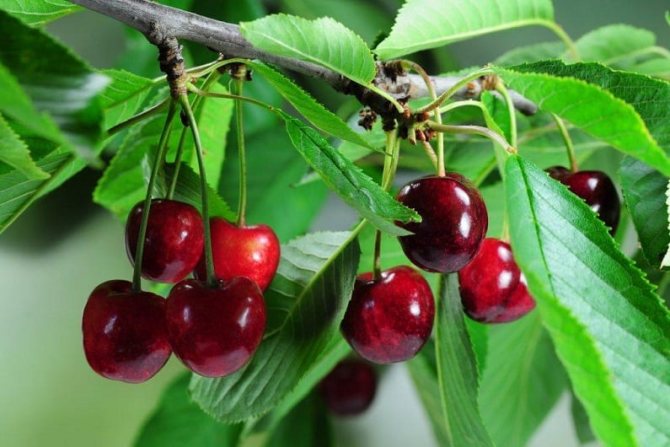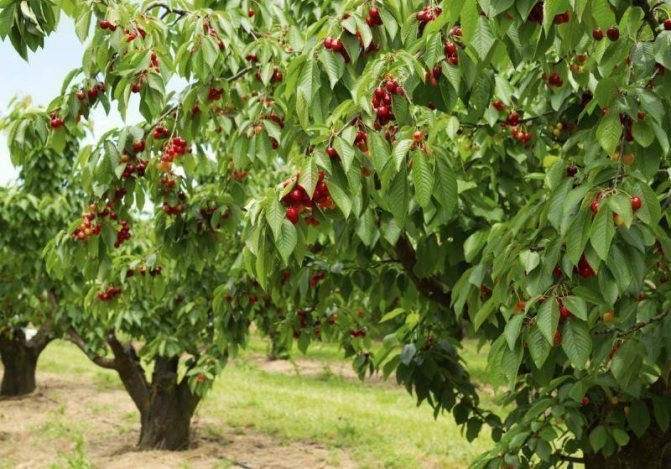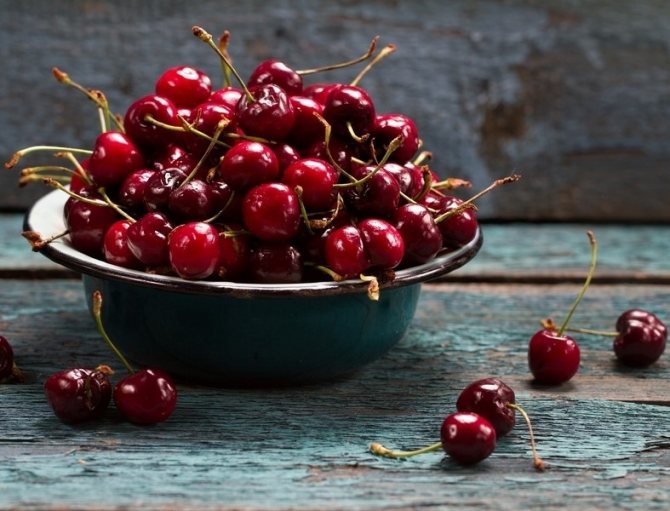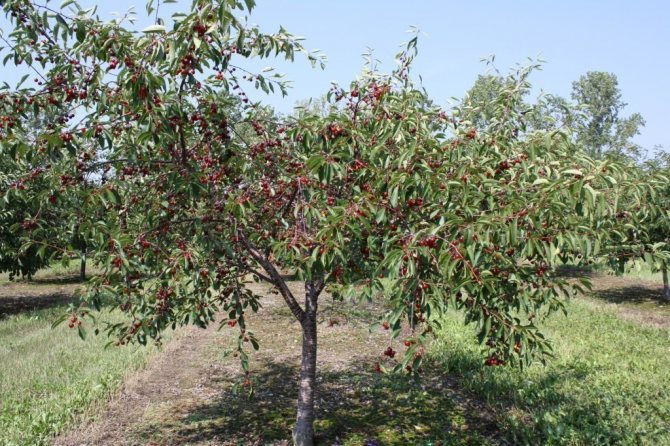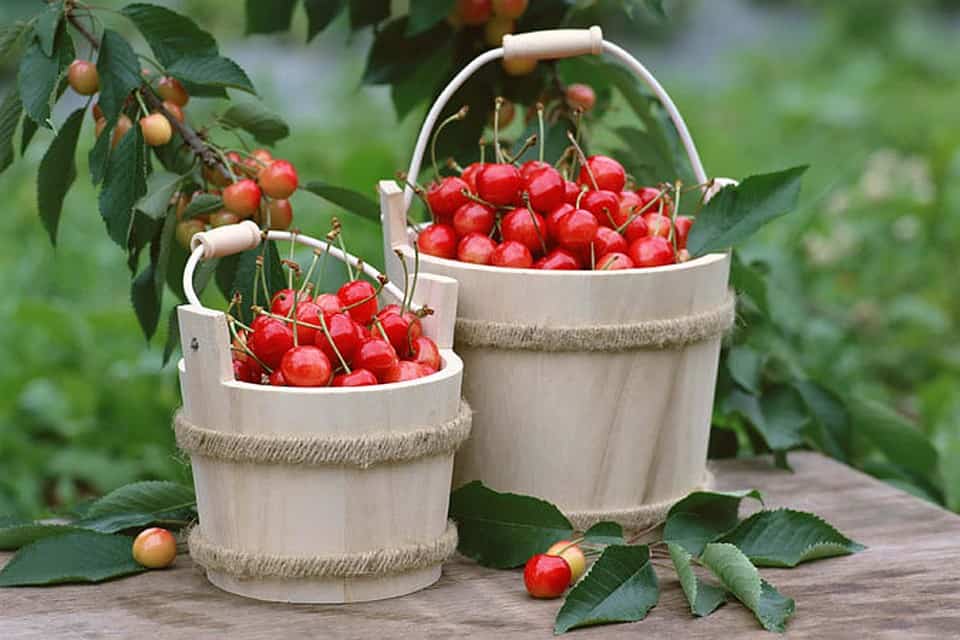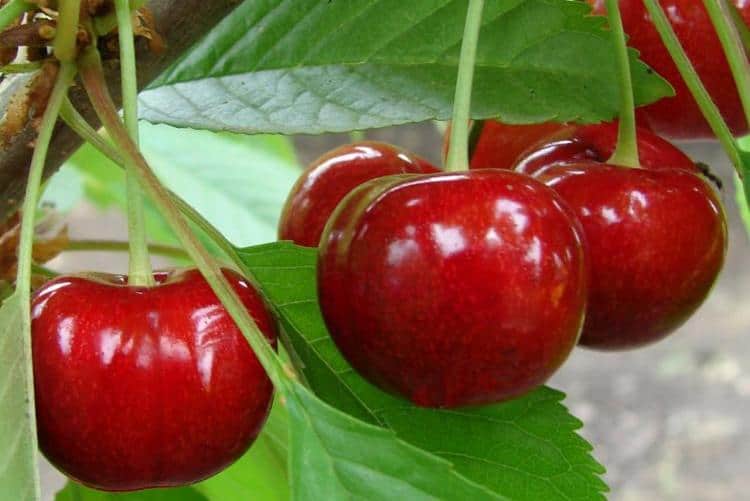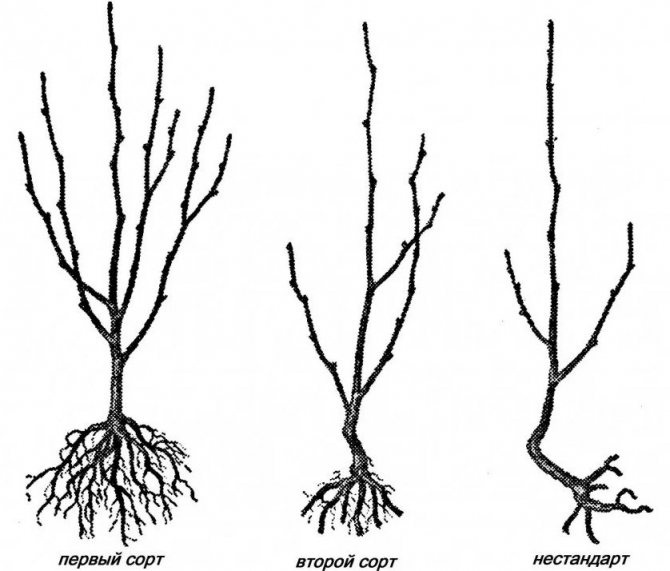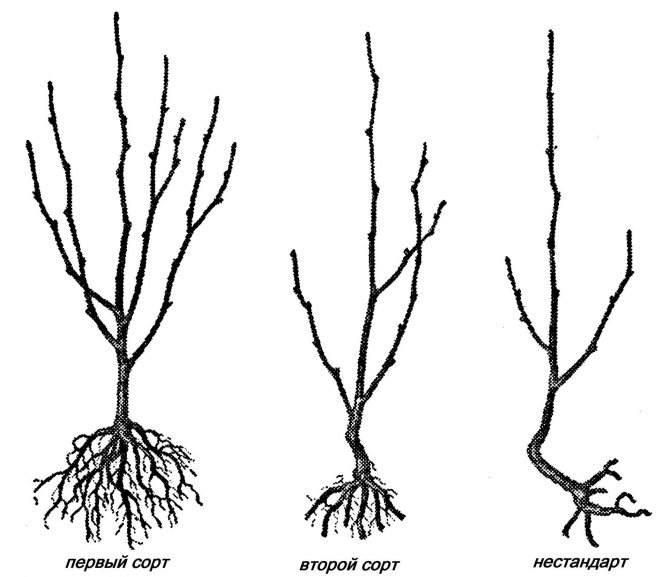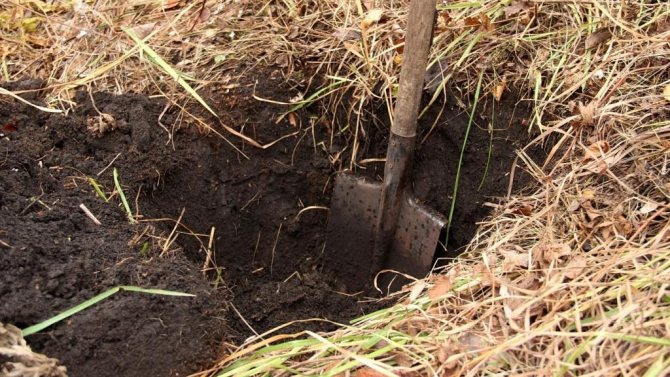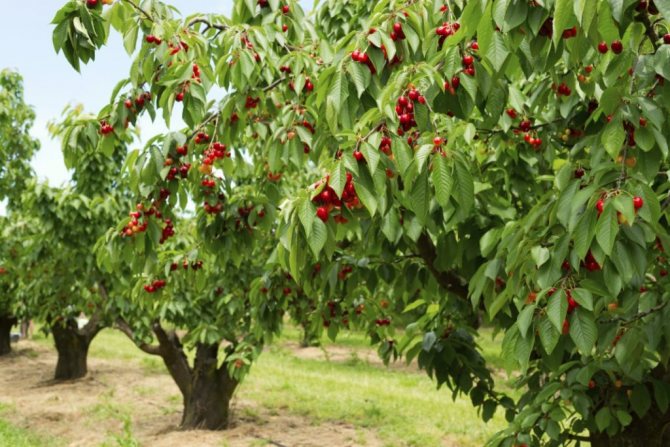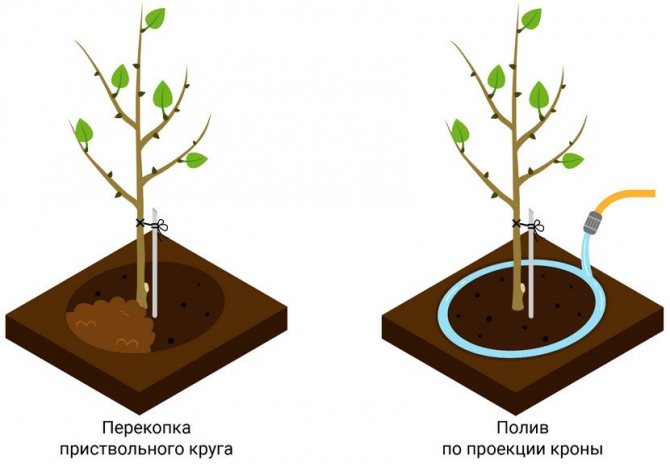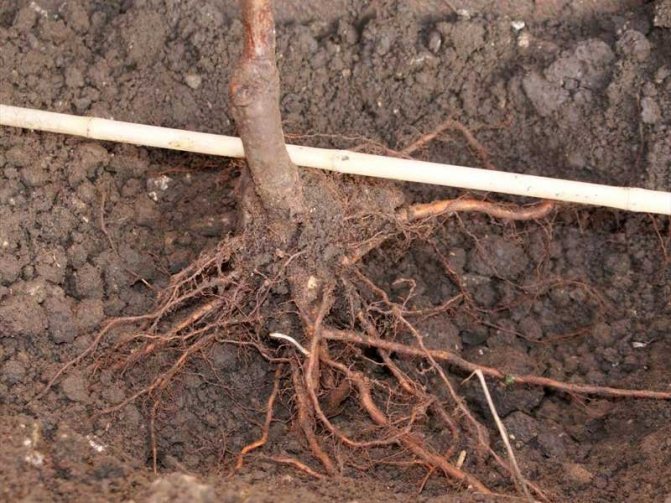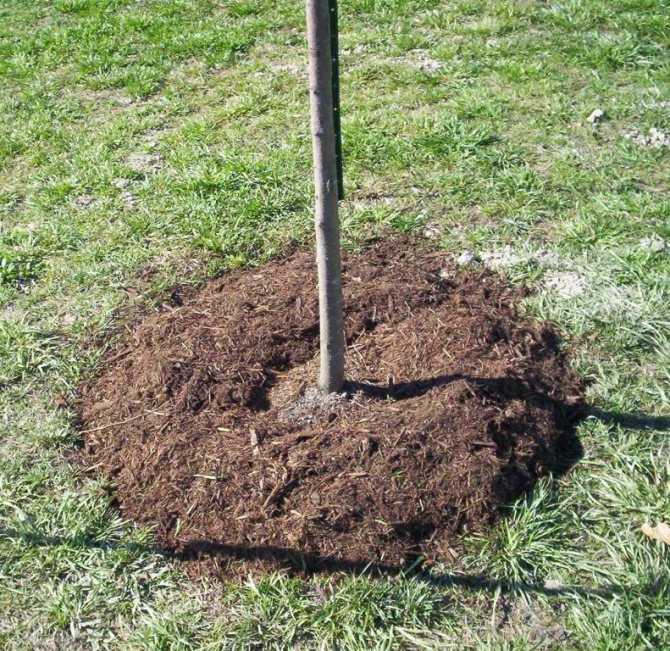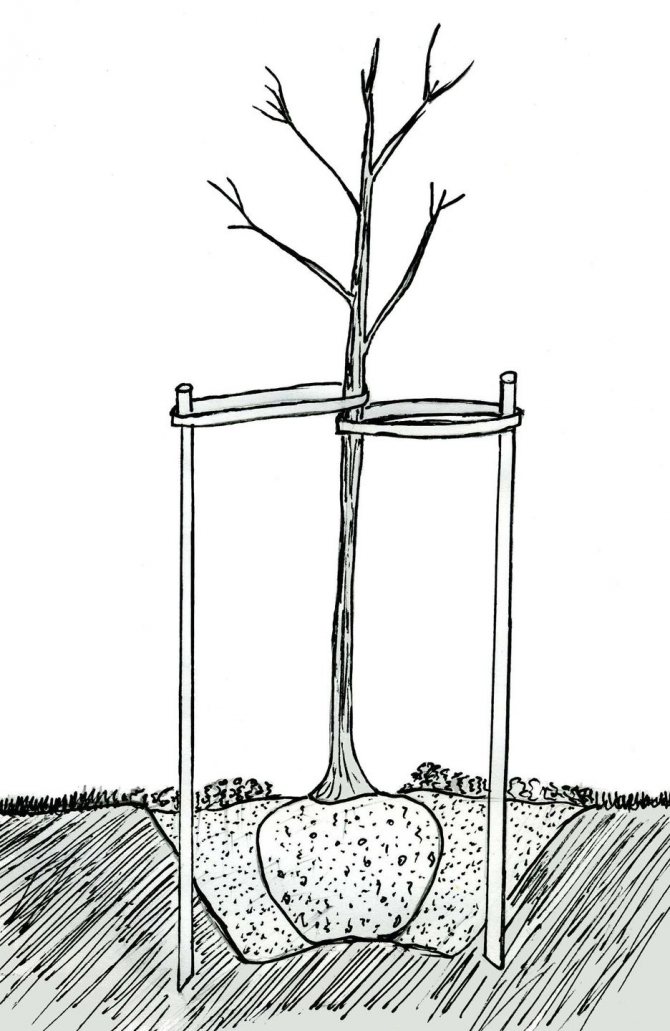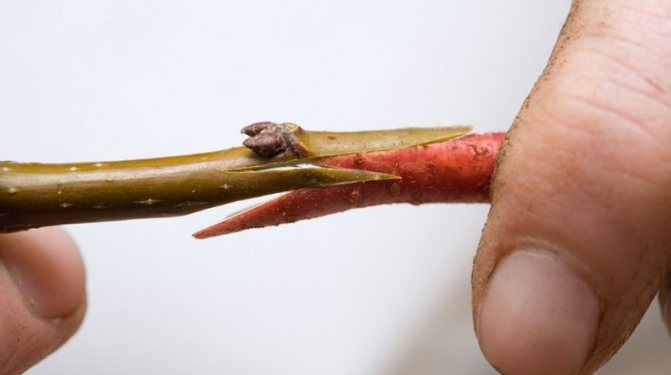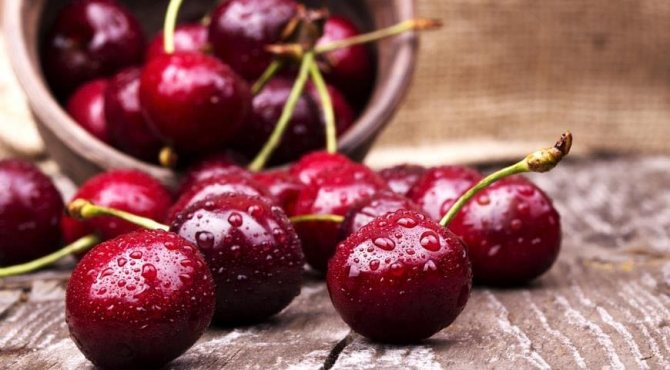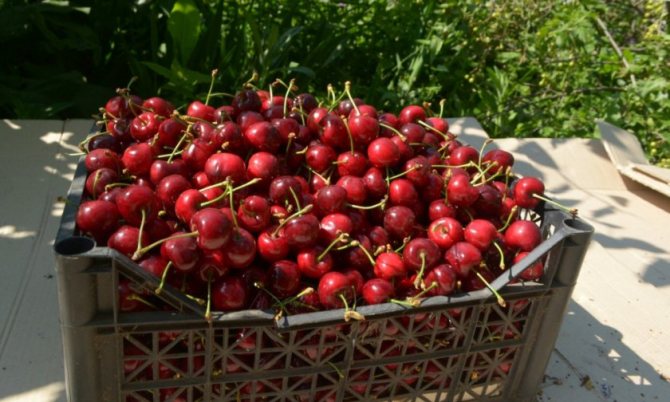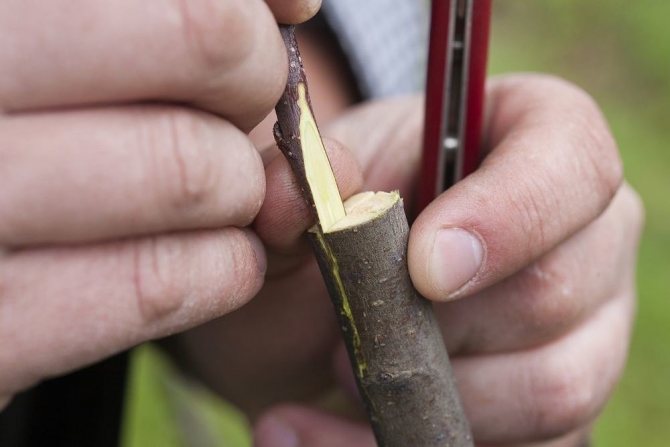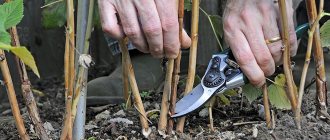Sweet cherry is a tree of the Rosy family with large fleshy berries. The color of the berries can be of various shades from light yellow to maroon, almost black. Ripe cherries have a pleasant sweet taste and considerable benefits for the body.
The coumarins and oxycoumarins contained in sweet cherries reduce the risk of atherosclerosis, cleanse the blood of harmful cholesterol and reduce the burden on the heart.
Scientists claim that the seasonal use of sweet cherry fruits has a beneficial effect on metabolic processes in the human body. People whose diet includes this berry have a higher metabolism, and the processes of tissue and bone regeneration are faster.
Sweet cherries are considered to be an excellent antidepressant. It promotes the production in the blood of the so-called hormones of happiness - endorphin and serotonin, which in turn increase the body's resistance to stress and performance.
This berry is rich in vitamins A, B1, B6, E, as well as anthocyanins, which, among other things, have a beneficial effect on human vision, lowering intraocular pressure, improving blood circulation and increasing the elasticity of the retina.
The choice of planting material
It is worth purchasing cherry seedlings only in specialized nurseries. A tall tree with a large number of shoots will not be the best option - during digging for sale, its powerful root system is damaged and the survival rate of such plants is much lower than annual seedlings.
Each selected plant must have a visible grafting site. Outwardly, it looks like a slight bend in the trunk at a distance of 5-20 cm from the root collar. If the trunk of the seedling is straight, this indicates that it is most likely a seedling, and the quality of the future harvest is unlikely to correspond to the declared variety.
An annual cherry tree should have 2-4 branched shoots no more than 20 cm long. The optimum height of the seedling is about 1.5 m.The root lobe should be well developed, and their length should not exceed 25 cm.
Unbranched seedlings are also considered suitable if the thickness of their trunk is more than 2 cm.When buying such a tree, after planting it is crowned - the crown is cut off above the bud at a height of 18-20 cm.
The roots of the seedling should be moist at the time of purchase. On the root system and aboveground parts of healthy plants, there are no outgrowths and damage. Inelastic bark, cracking at the slightest bend, indicates that the plant has been overdried. There should be no open leaves on the seedling.
The best varieties for the Moscow region
Sweet cherry, unlike other fruit and berry crops, is more capricious in terms of wintering, therefore, for growing in the Moscow region, it is better to purchase the most frost-resistant varieties. The most attractive variety for this region is the Iput cherry. In addition to resistance to low temperatures, there are such advantages as early ripening of fruits, resistance to fungal diseases, as well as a good yield - about 30 kg with an average weight of 1 berry in 9-10 g.
For gardeners who have a small plot of land at their disposal, such a factor as the compactness of the crown and the small height of the tree will be important. In this case, the best purchase would be the Ovstuzhenka cherry.Its fruits are slightly smaller than those of the previous variety, but more stable and transportable. Ostuzhenka also winters well in the Moscow region and rarely suffers from various kinds of diseases.
Fatezh is considered the most productive cherry variety; under favorable conditions, up to 50 kg of yellowish-red sweet fruits with an average weight of one berry in 4 g can be harvested from one tree.
Climatic conditions of the area
The peculiarities of the climate of the Moscow region do not provide for the cultivation of fruit trees. But thanks to the work of breeders, there are species acclimatized for the area.
Climatic features of the region:
- There is a big difference between the temperature in winter and summer.
- Decrease in temperature in winter, reaching -35 ⁰С.
- Winter with little snow.
- The contrast of the weather, a sharp change from heat to cool.
Currently, there are many varieties that are adapted to such conditions. Trees are able to withstand even the harshest weather.
Landing
You can plant cherry seedlings in a permanent place both in spring and in autumn.
If planting is planned in the spring, then it is better to prepare the soil in advance. For this, the soil is well dug up and fertilizers are applied along the way. Manure, compost or any complex mineral fertilizer are used as top dressing. If the soil in the selected area has high acidity, it is lime.
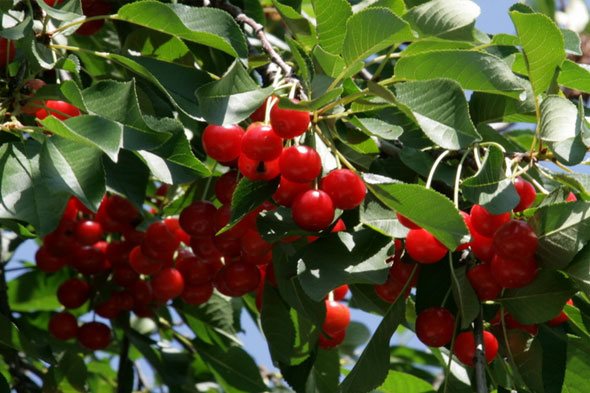
The planting site should be well lit, protected from strong winds, and should not be shaded by other trees or buildings.
It is important to remember that only a small number of cherry varieties are self-pollinated, therefore young trees are planted in groups, but so that the distance between them is at least 7 m.
To plant cherries, they dig a hole 60x80 cm and drive a stake into it, to which the tree will be tied in the future. Then the pit is 1/3 filled with a mixture of humus, turf and superphosphate, forming a neat mound. A seedling is placed on this hill, the roots are leveled and covered with half of the earth. Then the root system is abundantly moistened and covered completely. It is not worth deepening the root collar, the earth around the trunk is crushed and mulched with peat or humus.
The autumn planting of cherries in the middle lane hardens the plant and makes it more resistant to the whims of nature in the future. However, it must be remembered that this method significantly reduces the survival rate of seedlings. It is best to carry out this procedure no later than the second half of September.
A pit for planting cherries is prepared in advance, its dimensions should be approximately 60x60 cm. A mixture of humus and potassium sulfate is added to the pit, and then a stake is inserted to fix the trunk of the sweet cherry. The rhizome is carefully straightened and placed in a hole, and then sprinkled with earth and tamped a little. The trunk circle is abundantly moistened, the tree trunk is firmly tied to a peg. For better survival, it is recommended to cover cherries from severe frosts and cold winds by wrapping the trunk with thick paper or geotextile.
How to plant


The culture can be planted on the site, both in autumn and spring. Before winter, it is customary to do this in warm regions - 2-4 weeks before the freezing of the earth. Where a cold climate prevails, as in the middle lane and in the Moscow region, it would be more correct to plant cherries in the spring, before the buds swell.
Saplings need warmth and sun, so they need to be planted on the southern, southeastern or southwestern side of the site. It is also necessary to protect the tree from cold winds. Ideally, the site needs loamy or sandy loam, and the groundwater should go deep, because the taproots of a sweet cherry can deepen up to 2 m and begin to rot when there is an excess of moisture.
Interesting!
Most of the cherry varieties are partially self-pollinated and self-fertile. For the plant to bear fruit well, the ovary must be pollinated with the pollen of the "pollinator relative."For a minimum yield loss, it is desirable to have several trees on the site, even if they are self-fertile.
Soil preparation
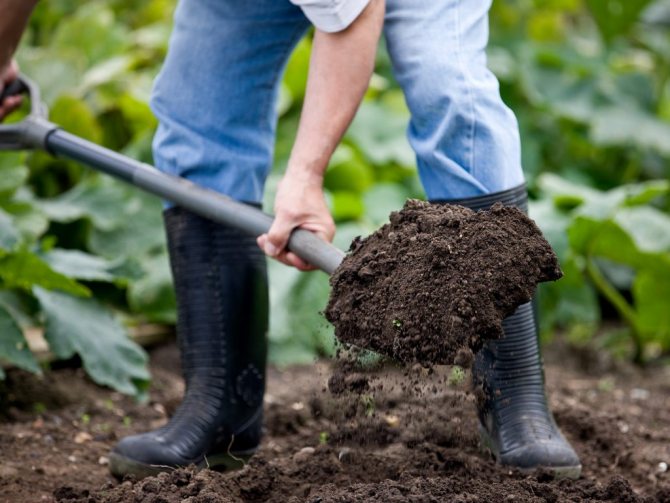

If planting is planned in the fall, then work on the preparation of the site should begin in advance. 1.5-3 weeks before the day of planting, you need to dig up the soil and apply fertilizers:
- superphosphate - 0.18 kg per m2;
- compost - 10 kg per m2;
- potash fertilizers - 0.1 kg per m2.
You can add only a special complex intended for cherries and cherries, in the recommended dosage. If the soil is highly acidic, you will need to add slaked lime. But this must be done 7-10 days before the application of other fertilizers, otherwise they form insoluble complexes and will not bring any benefit.
Table: Recommended dosage of lime for different types of soil
| Reaction of the medium (pH) | Clay, loamy, kg / m2 | Sandy, sandy loam, kg / m2 |
| ≤ 4 | From 0.5 | 0,3-0,4 |
| 4,1-4,5 | 0,4 — 0,5 | 0,25-0,3 |
| 4,6- 5,0 | 0,3 — 0,4 | 0,2-0,4 |
| 5,1-5,5 | 0,25 — 0,3 | Do not apply |
| 5,5-6,0 | Do not apply | Do not apply |
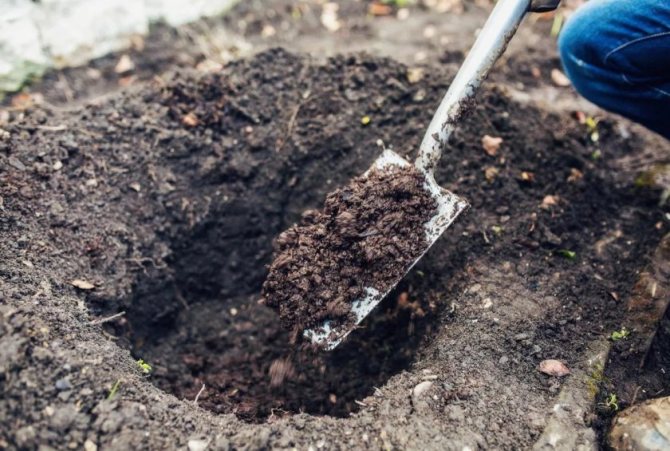

The seedling pit is prepared 2 weeks before planting: the diameter is at least 1 meter, and the depth should reach 60-80 cm.When removing the soil, a stake is driven into the center of the niche, rising half a meter above the level of the site, and the upper fertile layer is folded separately from the lower and mixed with compost and fertilizers:
- superphosphate - 0.2 kg;
- wood ash - 0.5 kg;
- potassium sulfide - 0.06 kg.
This mixture is placed in a pit, forming a tight mound around the peg. An infertile soil layer is poured on top, the site is watered and left for 2 weeks for the earth to sink.
Sapling selection
Better to take one- or two-year copies. The foliage on the branches must be removed to prevent moisture loss. When choosing a young plant, it is necessary to carefully examine the trunk: by its appearance, you can determine the quality of the sweet cherry:
- Vaccination trace - varietal (early fruiting, tasty berries).
- An abundance of branches - it will not be difficult to form the crown correctly.
- The only powerful conductor - a mature tree will not break with a good harvest.
The root system must be developed, healthy and not dry. During transportation to the site, it will need to be wrapped in a damp cloth and a layer of polyethylene.
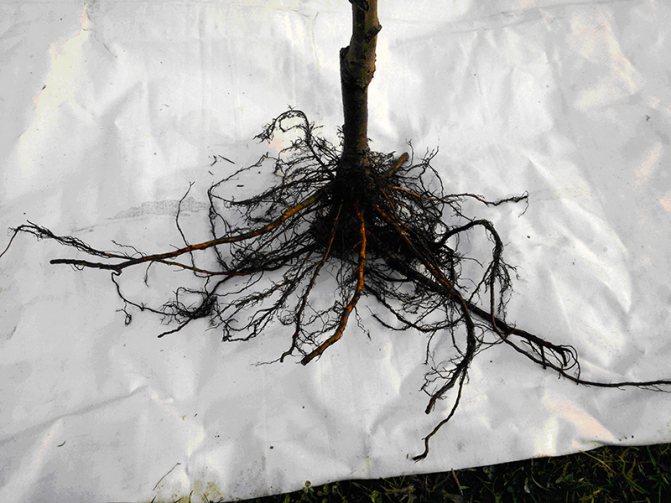

Interesting!
Immediately before planting, cut off any untrustworthy shoots and place the root system in water for 2-10 hours, depending on the degree of dryness.
Table: The best varieties of cherries for the Moscow region
| Variety | The beginning of fruiting, the age of the tree in years | Ripening terms | Berry weight, g | Productivity from one tree, kg | Needs cross-pollination |
| Large-fruited | 4 | Second half of June | 10,5 — 18 | 44-55 | + |
| Franz Joseph | 5-6 | End of June | 5-8 | 35-40 | + |
| Valery Chkalov | 5-6 | May | 6-9 | Up to 60 | + |
| Lena | 4 | July | 6-8 | 20-25 | + |
| Michurinka | 5-6 | July | 6-7 | 30 | + |
| Veda | 4-5 | July | 5-6 | Up to 65 | + |
| Raditsa | 4-5 | Mid june | 4,5-6 | 35-55 | + |
| Iput | 4-5 | End of June | 5-9 | 20-25 | + |
| Rechitsa | 5 | Second half of July | 5-6 | 30 | + |
| Bryansk pink | 5 | July August | 4-5 | 20-30 | + |
| Ovstuzhenka | 4-5 | June | 4-6 | 16-30 | + |
| Odrinka | 5 | July | 5,5-7,5 | 82 | + |
| Narodnaya Syubarova | 4 | June | 6 | 18-30 | — |
| Chermashnaya | 4-5 | June | 4,5 | 12-30 | + |
| Teremoshka | 4-5 | July | 5-6,5 | 15-30 | + |
| Leningrad black | 3 | Second half of July | 3,5 | 30-40 | + |
| Backyard yellow | 6 | June | 5,5 | 50 | + |
| Tyutchevka | 5 | July August | 5,3 | Up to 80 | + |
| Red hill | 4 | June | 4-6 | 45 | + |
| Jealous | 5 | End of June | 5-8 | 14-30 | + |
| Gift to Stepanov | 4 | July | 4 | Up to 60 | + |
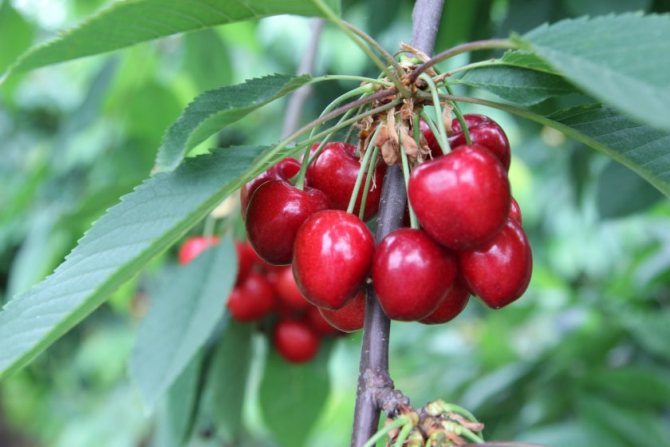

For varieties suitable for cultivation in the Moscow region, frost resistance and good resistance to diseases are characteristic (except for cherries of the Valery Chkalov variety, it is susceptible to gray rot and coccomycosis). Red varieties are well stored and suitable for transportation, yellow cherries have a more delicate skin - they cannot be transported, but gardeners' reviews of such a berry are very good.
Disembarkation
You can plant cherries in open ground in the fall before the arrival of stable frosts. It is necessary to ensure that the root collar of the plant, after sprinkling with earth, remains above the surface by at least 5 cm. The roots are carefully straightened, placing them on a lump of fertile soil, and the hole is filled with an infertile layer. Then they pour a bucket of water so that the soil subsides.The earth around the trunk is compacted and a groove is made 30 cm from it, into which another bucket of water is poured. After subsidence of the soil, you will need to add earth. Placing several cherry seedlings, it is necessary to leave at least 4 m between them. This is due to the growth of the root system and tree crowns.
In the spring, after the snow cover has melted and the soil has dried, nitrogenous and mineral additives are introduced into the pit prepared in the fall. Plants can be planted in 7-10 days. After planting, cover the soil around the trunk with mulch.
Agrotechnical cultivation
Sweet cherries are very demanding for watering. Drought can lead to the death of a young plant, and excessive soil moisture will prevent oxygen from reaching the roots, the berries on the flooded plant will begin to crack. The optimal irrigation regime is 1 time in 2 weeks, however, if the summer is hot and dry, watering is increased up to 1 time in 7-10 days.
Fertilize seedlings 2 times per season. The first complex feeding is carried out at the very beginning of May, the second - in September. Superphosphate is suitable for autumn feeding - it increases the winter hardiness of plants.
In order for the sweet cherry to develop correctly and bear fruit abundantly, it needs to form a crown. To do this, trees are regularly pruned according to the following pattern:
- 1 year of cultivation. Leave a trunk with a length of 70-90 cm.
- 2 years of cultivation. Leave 4-6 powerful skeletal branches of the lower tier with a length of no more than 50 cm.It is important to remove all branches that have grown at a height below 65 cm.
- 3 years of cultivation and subsequent. All semi-skeletal branches leading to the inside of the crown are removed, as well as all dried and damaged branches, the remaining branches are shortened by half.
Cherry care during the growing season and protective measures
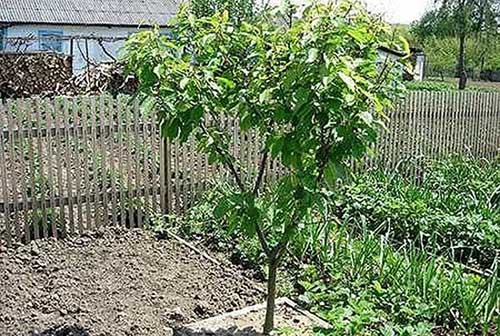

When planting and caring for cherries in the Moscow region, a number of rules must be observed:
- Watering the plants should be regular. It is enough to water the ground in the near-trunk circle 2 times a month, but if the summer is hot - after 10 days. More often - ripe berries will crack, roots will begin to choke.
- You need to fertilize fruit trees only at the very beginning of May. Superphosphate increases winter hardiness and does not promote the growth of greenery, it can be used in September. Elongated twigs are prey for frost.
- Frost protection consists in wrapping the trunk with paper, geotextile. No pruning in the fall. Flowering trees are sprayed with honey water, covered from frost, leaving gaps for bees to fly in.
- Pruning is done in early spring. Tops are removed and growth inward, thickening the crown. If there are dried, broken twigs, they are removed along the open foliage.
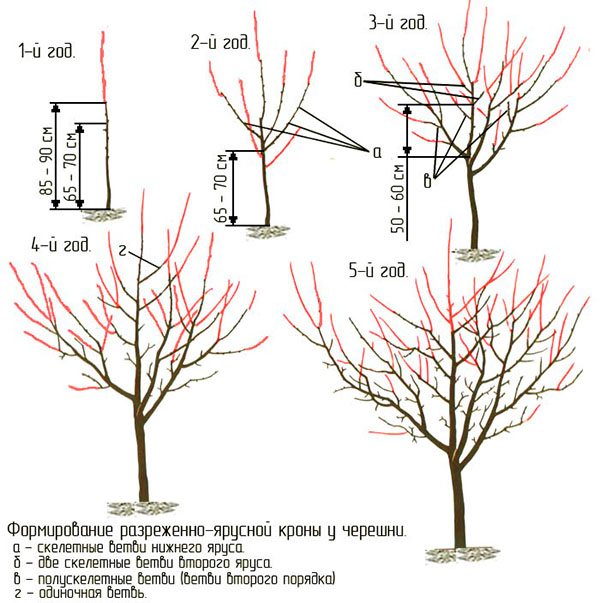

Care for cherries in the Moscow region should be balanced, commensurate with the weather conditions. The selection of varieties different in terms of ripening, the presence of pollinators are indispensable conditions for obtaining stable yields of sweet berries.
Video about cherries in the Moscow region
Diseases and pests
Despite the resistance of most varieties of sweet cherries to fungal diseases, they occupy a leading position in the list of possible problems that may appear when growing this crop.
Clasterosporium disease can be recognized by black spots on the leaves of the plant. In the future, the foliage of the infected cherry tree falls off, and the fruits dry out.
No less dangerous are cocomycosis and gray rot. They are caused by rainy, cold weather. Both diseases develop rapidly, and soon affect the entire tree. The leaves dry out and crumble, the yield of such plants decreases, the fruits rot.
As a prophylaxis for these and other diseases, immediately after flowering, the tree must be sprayed with a copper-containing preparation. In case of infection, the affected parts of the trees are removed and burned.
The most dangerous pests are:
- black cherry aphid,
- cherry fly,
- leaf roll,
- cherry pipe-runner.
They feed on plant sap, taking away their vitality and significantly reducing yields.As a fight against parasites, it is better to use insecticides such as Aktara, Karbofos, etc. In some cases, folk remedies can also help. For example, an aqueous solution of tobacco dust with the addition of a small amount of liquid soap.
Harvesting and storage
They begin to harvest cherries when the berries acquire a color characteristic of their variety. It is not worth picking unripe fruits, their taste is reduced, and they will not be able to acquire the necessary sweetness at home. Overripe berries crumble and attract a large number of birds and pests to the site.
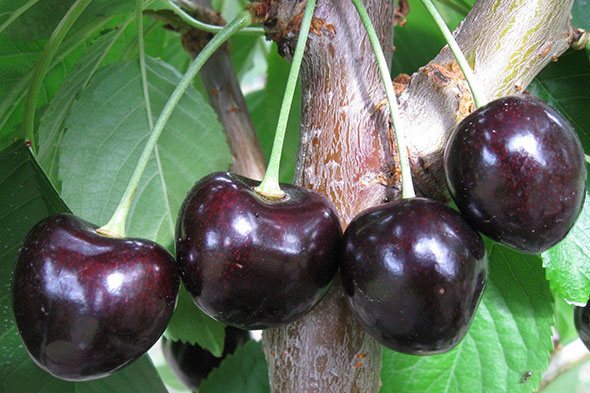

Harvested in the morning after dew falls. If it rains, it is better to postpone this event to the next day to extend the storage period of the crop.
Ripe cherries are not characterized by increased keeping quality. At room temperature, it retains its freshness for no more than 5-7 days, in the refrigerator - up to 3 weeks, but for this the berries must be absolutely dry.
The best winter storage method is to freeze the fruit. Thoroughly washed and dried berries are placed in sealed containers and put into the freezer. After defrosting, the cherries must be eaten fresh immediately or made into a compote or pie filling. Repeated freezing of sweet cherry berries is unacceptable.
Tags: edible berries
The benefits of cherries
Sweet cherries have practically no fat. They are 82% water, 16% carbohydrates. They contain a lot of nutrients, vitamins, micro- and macroelements, sugar. The fruits are used fresh and processed as juices, wine, compotes, jams and preserves. Cherry seeds contain about 30% fatty oil (for technical needs) and 1% essential oil used in perfumery.


The medicinal properties of sweet cherries have been known for a long time. It helps against vitamin deficiency and depression, anemia and thyroid diseases, protects against viruses. Yellow cherries contain a lot of vitamin C, dark-burgundy berries - iron, white-pink ones are distinguished by keeping quality. Cherry is low in calories, prevents the deposition of fat, but when consumed, it is worth observing the norm, especially for people prone to allergies.
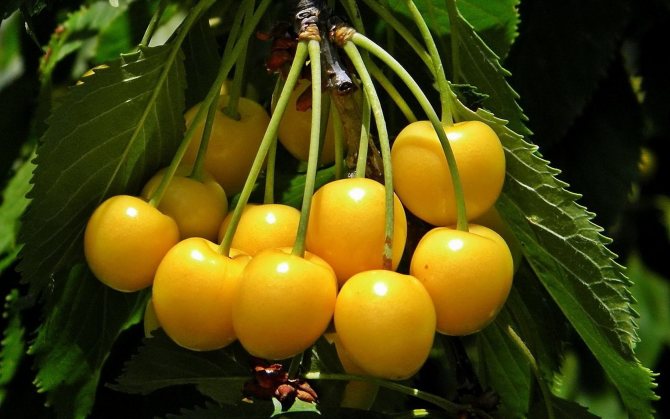

Decoctions from cherry flowers and leaves are an excellent remedy for infections and colds, from cuttings - to calm the nervous system, concentrated juice - in the manufacture of anti-aging masks. The vitamins contained in berries are useful for nails, hair, skin, teeth. Sweet cherry fully retains its properties when frozen.


